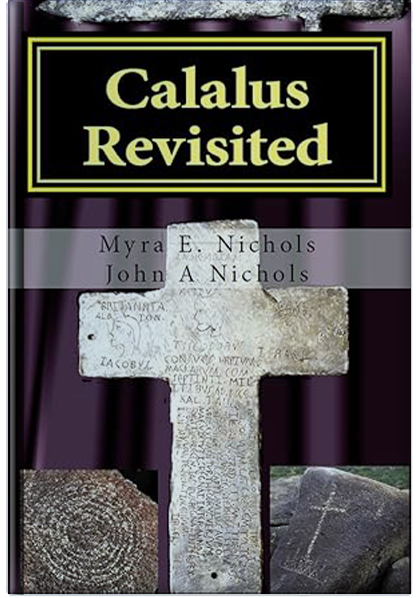Calalus Revisited

CALALUS REVISITED HOW ARIZONA’S RICHES REBUILT THE ROMAN EMPIRE
Embark on a captivating journey through time with “Calalus Revisited: How Arizona’s Riches Rebuilt the Roman Empire,” a thought-provoking exploration by John A. Nichols and Myra E. Nichols. At the heart of this narrative lies the enigmatic Tucson Artifacts, a contentious subject featured in documentaries on the History Channel and explored in recent literature as evidence of transoceanic cultural influence. Beyond the surface, the book meticulously examines the multifaceted aspects of this extraordinary discovery.
The narrative goes beyond the artifacts themselves, immersing readers in the intricacies of their origin, the identity of the people associated with them, their journey to the Tucson Basin, and the enthralling history they bring to light. The authors weave a rich tapestry, incorporating geological and climate insights of the region, ancient Indian legends from four tribes, and the findings of a French archaeologist, providing a comprehensive view of the context surrounding the artifacts.
As the pages unfold, readers are introduced to groundbreaking research and technology that traces a royal bloodline, connecting back to Rhadanite Kings from Septimania with ties to the Davidic lineage. These individuals, identified as Roman traders, play a pivotal role in mining Arizona’s riches, contributing to the revival of the medieval Roman Empire. The narrative skillfully navigates through the complexities of this hidden history, addressing the challenges in obtaining the truth and shedding light on why it has remained elusive.
The story extends beyond the artifacts, encompassing the authors’ personal journey. John and Myra Nichols, inspired by the success of their first publication, “Calalus Revisited,” embarked on a deeper investigation into their family history. This exploration led to their subsequent work, “The Rebirth of the Knights Templar, from Jerusalem to America.” The authors seamlessly integrate their familial quest into the broader narrative, providing a personal touch to the historical odyssey.
In essence, “Calalus Revisited” not only uncovers a forgotten chapter in history but also serves as a testament to the enduring strength of diverse cultures coexisting in harmony. The book paints a vivid picture of a time when people embraced differences, transcended conquerors, and reveled in the beauty of the American Southwest—a paradise where the echoes of ancient civilizations resonate with the present.
